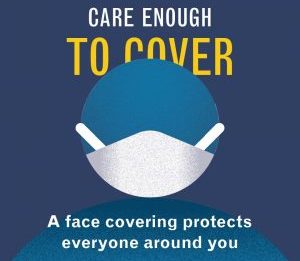Each of us can take action to slow the spread of COVID-19
Cases will slow – and Oregon will remain open – if we take the safe, simple steps to prevent the virus from spreading. Cases will continue to surge if we ignore health and safety precautions.
Steps you can take:
- Avoid gatherings – and rethink your Fourth of July plans: Think hard about getting together with people outside your household. In Oregon, cases accelerated after Memorial Day. We don’t want the same thing to happen over the coming holiday.
- Stay 6 feet apart: If you do host or attend a gathering – or go to your local restaurant or bar – stay 6 feet apart. We’ve all been cooped up for a long time. We want to see friends and family again. If you do socialize, do it safely – maintain physical distancing.
- Limit the number of people at the barbecue or picnic.
- Make sure people can stay far enough apart.
- Interact outside as much as possible.
- Wear a mask or face covering: Cover your face when you are in public. Masks and face coverings protect the people around you. You may feel great, but we know that people who are pre-symptomatic or asymptomatic can spread coronavirus. Don’t put the people you know and love at risk.
- Stay home if you’re sick: If you develop a fever, have a cough, start to experience shortness of breath or any other symptoms, stay home. Don’t expose other people.
- Answer the call: If you get a call from a contact tracer to let you know that you may have been exposed, take their advice and stay home for the entire time they recommend. This is a tried and true way to halt the spread, and we need people to answer these calls.
The bottom line is that COVID-19 is circulating more widely in Oregon. Oregon can stay safe if we all do our part to keep COVID-19 under control. If we don’t, our latest projections tell us we risk letting the virus spread fast across our state.
What we’re learning
On Friday June 26th, OHA released new modeling that shows a considerable rise in COVID-19 in Oregon. The latest model by OHA and the Institute for Disease Modeling is based on data through June 18. It offers three projections – optimistic, moderate and pessimistic – predicting that daily case levels could rise as much as 20 percentage points.
Oregonians are at greater risk of becoming infected with COVID-19 than they have been since before Governor Kate Brown issued the first stay-at-home orders. Our latest projections show we are most likely heading toward the worst-case scenario we projected last week – approximately 900 new infections per day by the end of July.
COVID-19 cases have increased each week for four straight weeks statewide, and it is spreading faster in the community. While large workplace outbreaks have driven increased cases in recent weeks, sporadic cases (those with no clear link to another case) account for a growing percentage of new cases.
The severity of illness among new cases of COVID-19 is lower than it was early in the outbreak. Despite the increase in cases in the past four weeks, the number of hospitalizations and deaths remain well below their peaks. Emergency department visits due to symptoms of the disease are still below 1 percent.
More younger people are contracting COVID-19. The median age of people with newly diagnosed COVID-19 infection is declining as more cases are being diagnosed in people younger than 50 years of age.
Oregon’s health care system has not been overtaxed by COVID-19 cases – yet. However, hospital capacity could be overwhelmed this summer if cases continue to surge.
The entire report can be found here.
OHA updates face covering guidance for specific counties
In order to clarify face covering use requirements, OHA has updated its guidance document for residents of Clackamas, Hood River, Lincoln, Marion, Multnomah, Polk and Washington counties; including Clatsop County effective July 1st.
In these counties, face covering use is required in all businesses and for the general public when visiting these businesses and for the general public when visiting indoor spaces open to the public.
The Governor also released general guidance for the use of face coverings in counties beyond the specified counties.
In the guidelines, indoor spaces are defined as spaces, whether publicly owned or privately owned, “where the public has access by right or invitation, express or implied, whether by payment of money or not.” In addition to the public areas of the businesses those spaces include building lobbies or common spaces, elevators, and buildings or meeting rooms outside of private homes where people gather for social, civic, cultural or religious purposes.
Oregon reports 250 new confirmed and presumptive COVID-19 cases, 5 new deaths
COVID-19 has claimed five more lives in Oregon, raising the state’s death toll to 202, the Oregon Health Authority reported Friday June 26th.
Oregon Health Authority reported 250 new confirmed and presumptive cases of COVID-19 June 26th, bringing the state total to 7,818.
The new cases reported today are in the following counties: Benton (4), Clackamas (17), Columbia (1), Deschutes (4), Douglas (4), Jackson (5), Jefferson (6), Josephine (2), Lake (3), Lane (10), Lincoln (4), Linn (4), Malheur (13), Marion (18), Morrow (12), Multnomah (61), Umatilla (22), Union (12), Wasco (3), Washington (39), and Yamhill (6).


